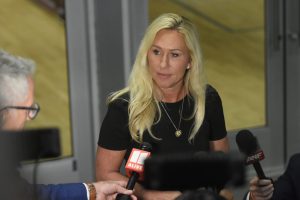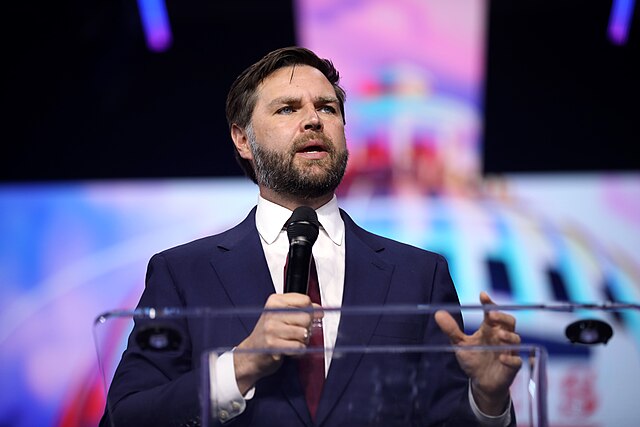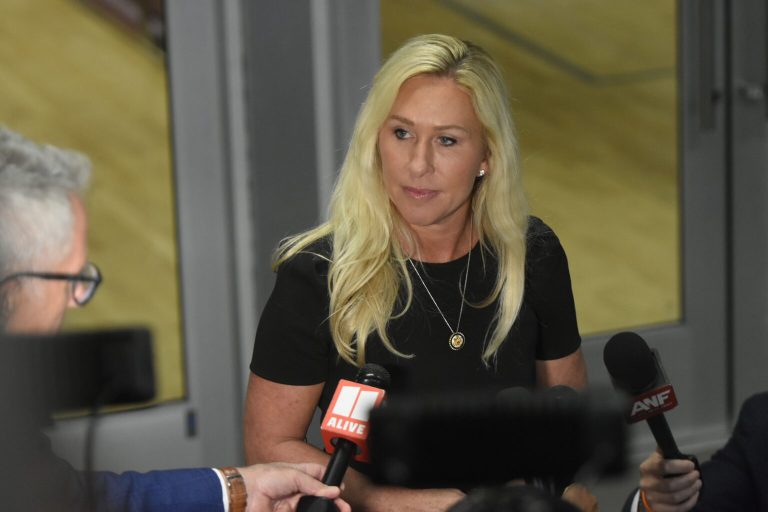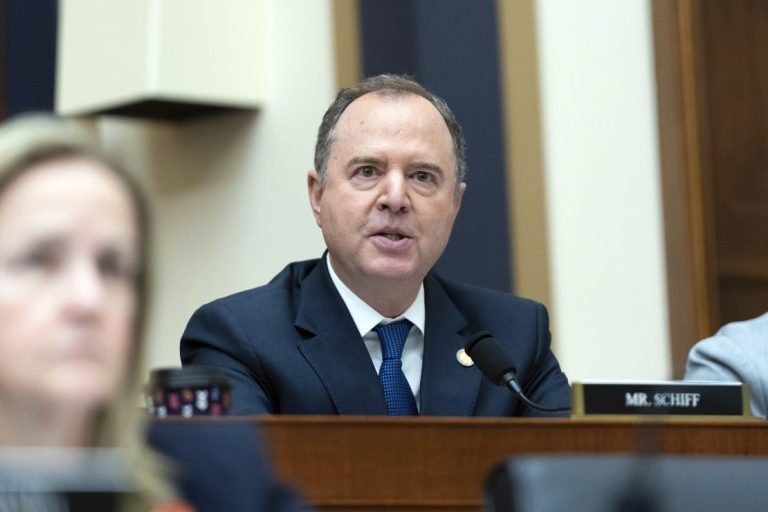Vice President JD Vance appeared entirely unshaken Thursday evening when a section of the audience at Washington’s prestigious Kennedy Center erupted in boos as he and his wife, Usha, took their seats. The incident, which quickly went viral online, has reignited debate over the deep cultural divide between the Trump administration and the Washington establishment.
The vice presidential couple arrived at the John F. Kennedy Center for the Performing Arts to attend a symphony performance by the National Symphony Orchestra. As they entered the box tier, a portion of the crowd jeered and shouted remarks referencing the January 6 events and the administration’s ongoing political clashes with Washington’s cultural class.
Despite the audible disapproval, Vance appeared unbothered. A viral video shared by The Guardian’s Andrew Roth captured the Ohio-born vice president offering a brief, almost amused smile before raising his wine glass in acknowledgment of the crowd. Usha Vance, seated beside him, continued speaking with her husband, seemingly ignoring the commotion as ushers moved through the aisles to calm the crowd.
“You Ruined This Place” — Audience Shouts at the Vice President
Eyewitnesses reported that several attendees shouted phrases like “You ruined this place!” and “Yeah, January 6th!” as the couple settled into their seats. Another voice in the background could be heard yelling, “Kill that light!”—apparently referring to a spotlight briefly illuminating the box where the couple sat.
The disruption lasted less than a minute before it was drowned out by the orchestra’s tuning. As the first notes of Stravinsky’s Petrushka filled the auditorium, the room quieted. Vance remained for the full performance, at one point applauding violinist Leonidas Kavakos’s interpretation of Shostakovich’s Violin Concerto No. 2.
Observers noted that the vice president did not acknowledge the heckling again for the remainder of the evening. A staffer familiar with the incident later told reporters that “the vice president and Mrs. Vance appreciated the performance and were not distracted by the noise.”
A Night at the Kennedy Center, a Symbol of D.C.’s Cultural Divide
The Kennedy Center, long considered a hub of Washington’s cultural elite, has found itself at the center of political controversy since Donald Trump returned to office in January. Shortly after taking the oath, President Trump dismissed all 31 members of the Kennedy Center’s Board of Trustees — a sweeping move that drew both criticism and praise depending on partisan perspective.
In a statement released at the time, the administration said the decision was part of an effort to “ensure the Kennedy Center reflects the values of all Americans, not just the political class of Washington.” Trump later appointed former U.S. ambassador Richard Grenell as the institution’s interim executive director, describing him as “a trusted voice who understands both culture and accountability.”
The firings followed Trump’s public criticisms of the Kennedy Center’s programming, which he had described on Truth Social as “elitist, political, and completely disconnected from American audiences.” The president had pledged to bring “fresh leadership and balance” to what he viewed as a taxpayer-supported institution too aligned with one side of the political spectrum.
That tension has set the stage for moments like Thursday night, where members of the audience — many of whom are part of Washington’s artistic and diplomatic community — reacted strongly to the sight of the vice president attending a performance.
Vance’s Calm Reaction Goes Viral
While the boos were brief, the footage spread rapidly across social media. Within hours, clips of Vance smiling and sipping his wine had been viewed millions of times on X (formerly Twitter) and TikTok. Supporters praised his calm demeanor, describing it as evidence of his composure under pressure, while critics used the moment to underscore how polarizing the administration remains in Washington’s social circles.
Commentator Mike Davis wrote, “They booed JD Vance for showing up at the Kennedy Center — proving that civility isn’t exactly the left’s strong suit.” Others, however, framed the reaction as a symbolic rejection of what they called “political intrusion into cultural spaces.”
Political analyst Jenna Ellis remarked, “What’s remarkable is not that Vance was booed, but that he stayed, smiled, and applauded the orchestra like nothing happened. That says a lot about where this administration’s tone has shifted — unapologetic, but restrained.”
An Administration at Odds With the Capital’s Culture
The tension between the Trump-Vance administration and Washington’s cultural institutions has been one of the defining features of the current political landscape. While President Trump has prioritized what he calls “patriotic programming” in federal arts funding, many artists and curators in the capital have criticized the move as an attempt to politicize culture.
Vance, who rose to national prominence as the author of Hillbilly Elegy, has positioned himself as a bridge between working-class America and elite institutions — often using his platform to criticize what he sees as cultural elitism. His appearance at the Kennedy Center, therefore, carried symbolic weight.
During an interview earlier this year, Vance said, “Washington has its own culture — it’s insular, it’s exclusive, and it often forgets that art should serve everyone, not just those with invitations to the Kennedy Center.”
A Lighter Moment Earlier That Day
The Kennedy Center incident capped off a busy day for the vice president, who earlier had joined President Trump for a St. Patrick’s Day meeting with Irish Prime Minister Micheál Martin. The meeting produced one of the week’s most shared viral moments after Trump interrupted discussions about the economy to comment on Vance’s green tie and shamrock-patterned socks.
“I love these socks! What’s with these socks? I’m trying to stay focused, but I’m gonna ask for the VP’s socks,” Trump joked during the exchange, prompting laughter from Martin and staffers.
Vance later reposted the clip to X with a laughing emoji, writing, “I knew he’d comment on these socks.”
Earlier that morning, Vance and his wife had hosted Martin and his spouse at the vice president’s residence, the Naval Observatory. “In your honor, I have worn these shamrocks,” Vance said, showing off the socks to the Irish leader. “When we meet later in the Oval Office, the president is a big fan of conservative dress — but if he notices, you’ll have to defend me,” he quipped.
The meeting emphasized the enduring ties between Ireland and the United States, with both leaders highlighting shared history and cooperation on trade and peacekeeping. Martin also expressed gratitude for America’s role in helping broker peace during Northern Ireland’s long conflict.
A Calculated Calm Amid Political Turbulence
Those close to Vance say that his calm response at the Kennedy Center was no accident. One aide, speaking on condition of anonymity, said the vice president “has learned from the president that the best reaction to hostility is no reaction at all.” The aide added that Vance views such moments as reminders of “how deep the cultural rift still runs between everyday Americans and Washington insiders.”
Political observers have noted that Vance, often described as a disciplined and strategic communicator, has become one of the administration’s most effective ambassadors in settings where political hostility might otherwise dominate headlines. “He doesn’t overreact,” said historian Victor Davis Hanson. “He understands that the optics of grace under pressure often win more ground than confrontation.”
The Broader Symbolism of the Moment
For many watching, the Kennedy Center episode symbolized the broader social polarization shaping American politics in 2025. What was once a neutral cultural event became a flashpoint for the nation’s ongoing divide between populist conservatives and the liberal establishment.
Despite the jeers, the evening ended without further disturbance. When the orchestra concluded its performance, Vance reportedly stood to applaud before leaving the venue with his wife, again without comment to reporters.
As one concertgoer later told The Washington Examiner, “Whether you agree with him or not, he handled it better than most people would have.”

Emily Johnson is a critically acclaimed essayist and novelist known for her thought-provoking works centered on feminism, women’s rights, and modern relationships. Born and raised in Portland, Oregon, Emily grew up with a deep love of books, often spending her afternoons at her local library. She went on to study literature and gender studies at UCLA, where she became deeply involved in activism and began publishing essays in campus journals. Her debut essay collection, Voices Unbound, struck a chord with readers nationwide for its fearless exploration of gender dynamics, identity, and the challenges faced by women in contemporary society. Emily later transitioned into fiction, writing novels that balance compelling storytelling with social commentary. Her protagonists are often strong, multidimensional women navigating love, ambition, and the struggles of everyday life, making her a favorite among readers who crave authentic, relatable narratives. Critics praise her ability to merge personal intimacy with universal themes. Off the page, Emily is an advocate for women in publishing, leading workshops that encourage young female writers to embrace their voices. She lives in Seattle with her partner and two rescue cats, where she continues to write, teach, and inspire a new generation of storytellers.









